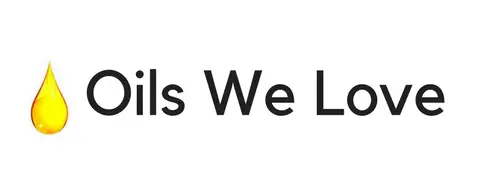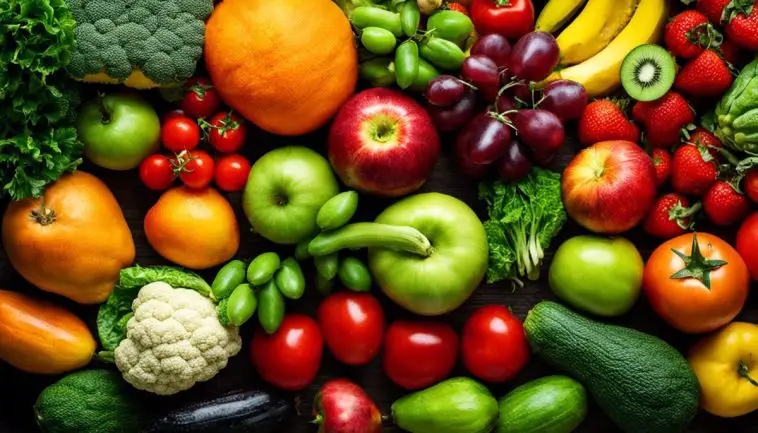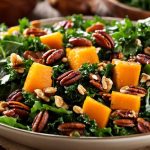Often, the journey to better health and wellness starts with the simple act of choosing the right nutrients for your body. Clean eating, a lifestyle that revolves around consuming whole, unprocessed foods, endeavors to bring you closer to this goal. This lifestyle ensures you’re fueling your body with natural foods, packed with essential macronutrients and micronutrients, while ditching processed meals laden with unhealthy additives. The concept of clean eating is more than just a diet; it’s a commitment to making healthier choices and enjoying a wider variety of nature’s bounties. This transition doesn’t occur overnight; it requires understanding the fundamentals of clean eating, comprehensive meal planning, and anticipation of potential challenges along the way. One could facilitate this shift by incorporating a 14-day clean eating meal plan, an effective means of jumpstarting your journey towards a healthier you.
Understand What is Clean Eating
Understanding Clean Eating
Clean eating is an approach to diet that emphasizes consuming foods in their most natural and unprocessed state. It advocates for nourishing, raw, and whole foods that are free from additives, preservatives, and artificial ingredients. The aim of clean eating is not simply to lose weight, but to improve overall health, energy, and well-being.
Foods to Include in a Clean Eating Diet
To embark on a clean eating journey, focus on incorporating as many natural foods as possible. These include whole grains such as brown rice, quinoa, and oats, fruits, and vegetables of all types. Opt for lean proteins like chicken, turkey, fish, and tofu, and heart-healthy fats like nuts, avocados, and olive oil. Legumes, seeds, and dairy products in their simplest forms, like milk, yoghurt, and cheese, are also part of a clean eating meal plan.
Foods to Avoid in a Clean Eating Diet
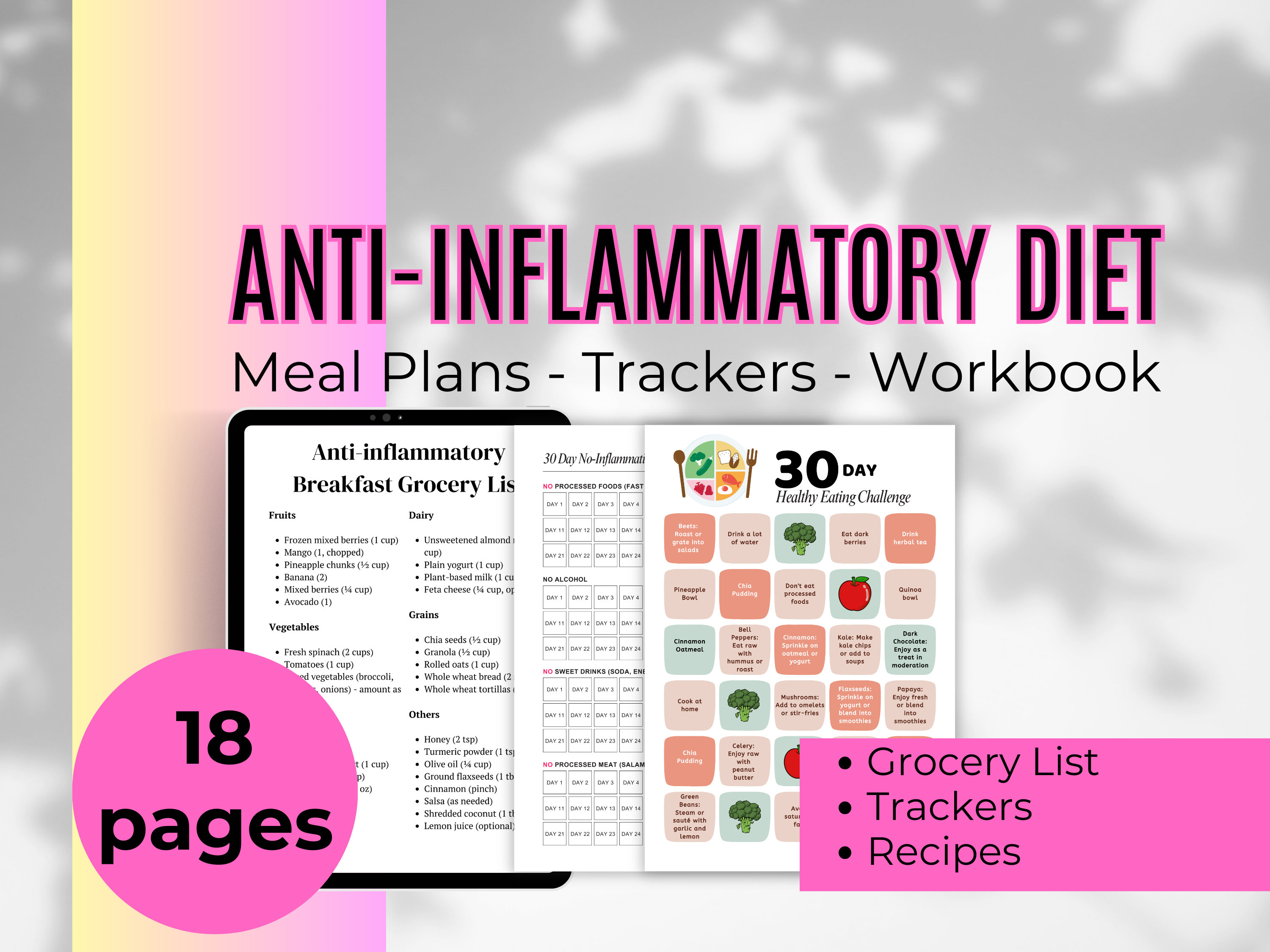
- 2-Week anti-inflammatory meal plan.
- 45 Foods that Cause Inflammation
- 31 Things to Avoid on Food Labels
- Grocery Lists. Challenges. Symptoms Tracker
Avoid processed foods, which often hide unhealthy fats, sugars, and sodium. This group includes ready-to-eat meals, fast food, canned goods with added sodium, sugary snacks, soda, and processed meats like hot dogs. Also steer clear of foods with trans fats, which are typically found in commercially baked goods and fried foods. Limiting the consumption of refined grains, like white rice and white flour products, is also advisable.
The Benefits of a Clean Diet
A clean diet is packed with numerous health benefits. It can lead to weight loss, not through calorie restriction, but by promoting healthy and mindfully eating habits. It also encourages increased consumption of fruits and vegetables, which are full of vitamins and antioxidants to boost the immune system, and are associated with a reduced risk of many chronic diseases, including heart disease and some cancers.
Clean eating can also lead to improved mental health. Studies have shown a direct correlation between the consumption of processed foods and an increased risk of depression. Conversely, diets rich in whole foods are linked with lower levels of depression and anxiety.
14 Day Clean Eating Meal Plan
After understanding the basics of clean eating, the next step should be constructing a 14-day clean eating meal plan. This should include a variety of fruits, vegetables, whole grains, proteins, and healthy fats.
For example, for breakfast, one may include oatmeal topped with berries and a sprinkle of nuts. Lunch could be a quinoa salad with mixed vegetables, and dinner might be a broiled fish with brown rice and steamed broccoli. Snacks could include carrots, bell pepper slices, or a handful of almonds. Every couple of days, it’s important to change the menu items to ensure nutritional diversity.
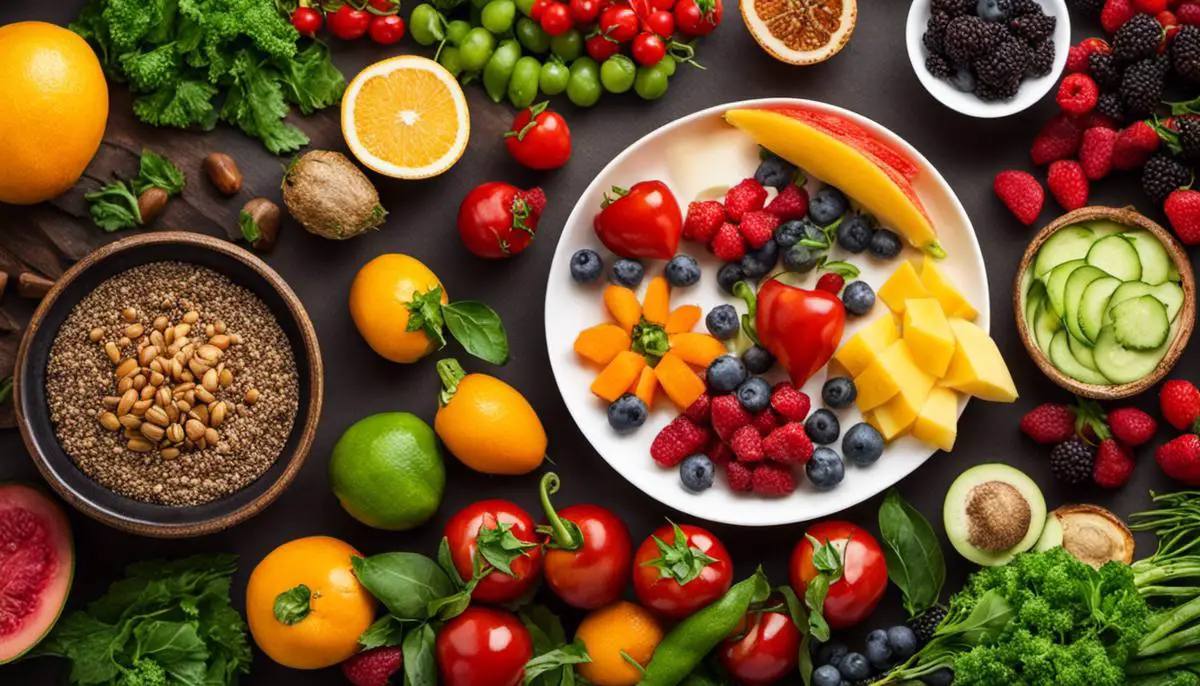
Knowledge on Nutrition
Understanding Basic Nutrition Principles
To begin eating clean, it’s crucial to understand basic nutrition principles. The human body requires two types of nutrients: macronutrients and micronutrients. Macronutrients include carbohydrates, proteins, and fats. Carbohydrates provide energy for the body, proteins aid in body growth and repair, and fats store energy. All three are required in large amounts and are crucial for maintaining energy levels, brain function, and overall body health.
The Importance of Balanced Meals
A balanced meal signals a meal that contains an appropriate proportion of all three macronutrients. Consuming balanced meals ensures regular intake of all essential nutrients, aiding in maintaining optimum health and preventing malnutrition and deficiency diseases.
Understanding Macronutrients
Proteins
Proteins are often referred to as the body’s building blocks. They help repair body tissues and aid in the production of enzymes and hormones. Protein-rich foods include lean meat, poultry, fish, eggs, dairy products, beans, nuts, and seeds.
Carbohydrates
Carbohydrates are the main energy source for the body’s functions. They get divided into simple carbs (sugar) and complex carbs (starch and fiber). Complex carbs, found in whole grains, vegetables, and legumes, should make up most of your carb intake.
Fats
Fats are essential for absorbing vitamins and protecting the heart and brain health. Healthy fats, such as omega-3 and omega-6, are found in fish, nuts, olive oil, and avocados. It’s recommended to limit intake of saturated fats, found in butter and red meat, and avoid trans fats, found in processed foods.
Fundamentals on Micronutrients
Micronutrients include vitamins and minerals, and though they are needed in smaller quantities than macronutrients, they are vital for health and wellbeing. Vitamins are organic compounds required for various metabolic processes, and minerals help in various body functions, like maintaining bone health and fluid balance.
You can find these in various fruits, vegetables, dairy products, meat, and whole grains. It is essential to consume a variety of food types to ensure the body gets a mix of all micronutrients.
14-Day Clean Eating Meal Plan
Once you grasp these principles, you can create a 14-day clean eating meal plan. This plan focuses on fresh fruits and vegetables, lean proteins, whole grains, and healthy fats, while minimizing processed foods, sugars, and unhealthy fats. Make sure to include all macronutrients and a variety of foods to ensure you’re getting all the essential micronutrients. It’s recommended to consult a dietician or nutritionist for a personalized meal plan that suits your preferences and dietary needs.
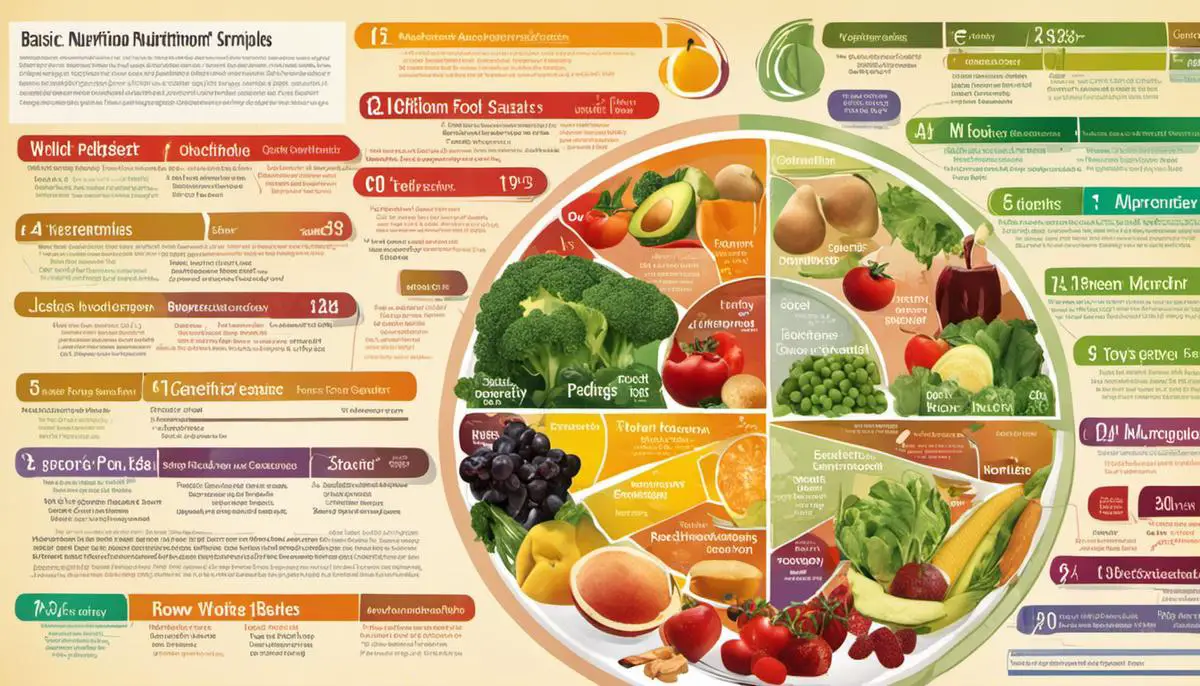
Meal Planning and Prep
Understand Clean Eating
Clean eating involves eating whole foods which are near as possible to their natural state. It includes consuming more fresh fruits, vegetables, and lean proteins, while minimizing the intake of processed, pre-packaged, and junk or fast food. Clean eating also incorporates drinking plenty of water and reducing the consumption of sugary drinks and sodas.
Create A 14-Day Meal Plan
First, it’s important to generate a meal plan that covers 14 days, which typically includes three meals a day and two snacks between meals. Use the USDA’s MyPlate as a guideline while planning each meal. MyPlate suggests filling half your plate with vegetables and fruits, a quarter of it with proteins, and the remaining quarter with whole grains. Furthermore, include a serving of dairy at each meal.
For snacks, choose combinations like an apple with almond butter or a cup of Greek yogurt with blueberries. Jot down your plans for every meal and snack for the next 14 days.
Gather Clean Eating Recipes
Browse cookbooks or reliable online sources to find a variety of clean-eating recipes that suit your taste buds. Websites such as EatingWell and Clean Eating Magazine offer a wide collection of clean-eating recipes covering various cuisines.
The keys to clean eating are variety and balance, so choose a mix of meals that include a range of different foods. For instance, a day’s menu might include oatmeal with berries and a splash of almond milk for breakfast, a spinach and tuna salad for lunch, roasted chicken with veggies and quinoa for dinner, and nuts and fruits for snacks.
Create a Comprehensive Shopping List
With the meal plan and recipes in place, create a comprehensive shopping list. This list should include fresh fruits and vegetables, lean meats and poultry, seafood, whole grains, nuts and seeds, and low-fat dairy products. You will also need healthy oils like olive or avocado oil for cooking, and spices and herbs to flavor your meals.
Always check your refrigerator and pantry before shopping. This not only avoids unnecessary duplications but also saves money. Organize your grocery list by food categories for a smoother shopping trip.
Food Prep in Advance
Prepping food ahead of time is a key strategy in sticking to a meal plan. Start with simple tasks like washing and chopping fruits and veggies, boiling eggs, and cooking grains like quinoa and brown rice in bulk.
Prep ingredients for each meal separately and store them in the fridge. You can also prepare entire meals, like salads or stir-fries, and store them in meal-sized containers. This way, you have ready portions you can quickly heat and serve.
Recap
Through understanding clean eating principles, planning your meals, sourcing recipes, prepping food, and generating a shopping list, you’re set for your 14-day clean-eating meal plan. By integrating these steps into your routine, not only will you save time and reduce waste, but you’ll also be embracing a healthier lifestyle.
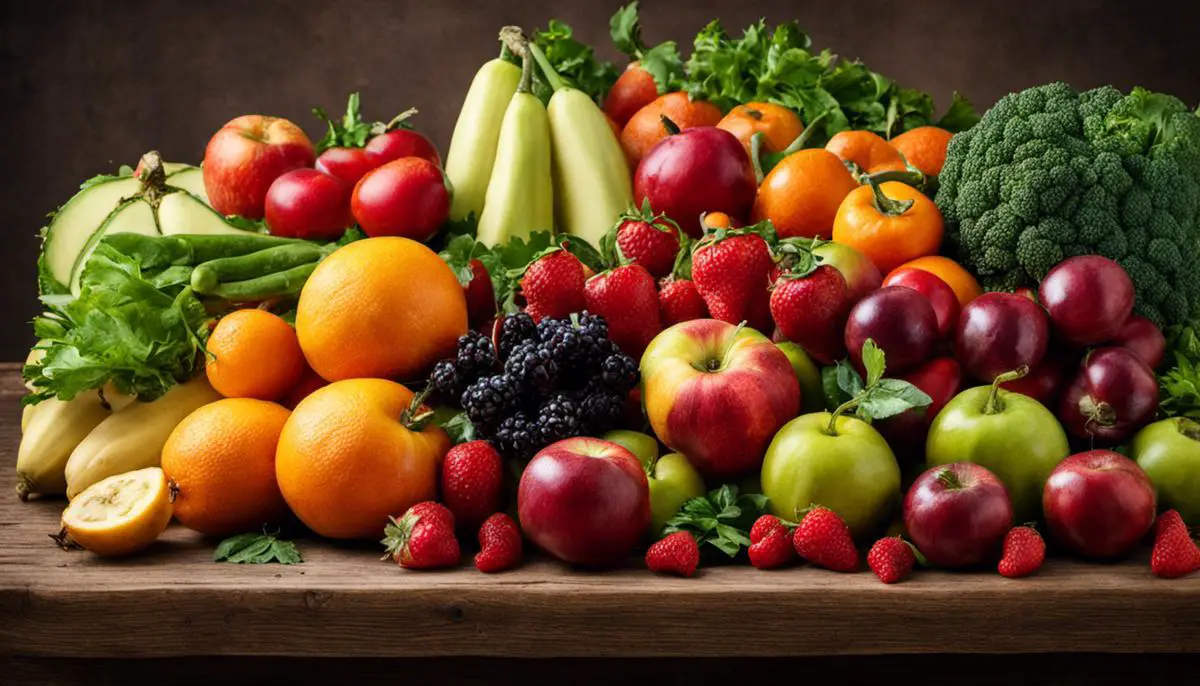
Adapting to Clean Eating
Transitioning into a Clean Eating Lifestyle
Transitioning into a clean eating lifestyle begins with education. Understanding what clean eating entails is the first step towards focusing on whole, unprocessed foods that are close to nature. Start by reading labels. Avoid foods with ingredients that are hard to pronounce. Aim for whole grains instead of processed grains, fresh fruits and vegetables instead of canned or frozen, lean proteins such as chicken, turkey, fish, and eggs, and healthy fats like avocados, nuts, and seeds. Limit added sugars and salt and drink water instead of sugary drinks.
Handling Cravings
Cravings can be the biggest challenge when transitioning into a clean eating lifestyle. The first way to handle cravings is by not denying them. Instead, find healthier substitutes. If you have a sweet tooth, opt for a piece of fruit instead of a candy bar. If it’s salt you crave, try air-popped popcorn instead of potato chips. Regular exercise can also help curb cravings and keep your appetite in check.
Dining Out and Social Events
Dining out or attending social events doesn’t have to mean derailing your clean eating plan. When dining out, opt for grilled, broiled, or steamed dishes instead of fried or battered options. Ask for sauces and dressings on the side so you can control your portions. At social events, bring a healthy dish so you know there will be at least one clean option. And, don’t feel obligated to have a taste of everything. Instead, choose selectively and savor the flavors.
Challenges and Possible Solutions
It’s common to face challenges when transitioning to a clean eating lifestyle, but they can be overcome. One common challenge is time — preparing fresh food can take longer than heating up processed food. To address this, set aside time each week to meal prep. This could involve making a batch of whole grains, chopping vegetables, or cooking lean proteins to be used throughout the week. Another challenge can be the higher cost of fresh, organic foods. To help with this, make a shopping list before you go to the grocery store and stick to it. You can also save money by buying in-season produce or considering lower-cost sources of protein, such as beans and lentils. With patience, planning, and commitment, a clean eating lifestyle is achievable.

Ending your 14-day clean eating journey doesn’t mean reverting back to old habits. It’s an opportunity to take the lessons learned and apply them into a sustainable long-term lifestyle. With increased awareness of nutritional necessities, meal planning skills, and strategies for coping with cravings, the transition to clean eating can become a lasting habit. Even as social events or dining out pose challenges, the resilience you’ve developed over the two weeks will help you make healthier choices. You’ve embarked on a journey of self-enhancement; a quest to nourish your body with what it truly deserves, prioritizing quality and health above all. As this journey unfolds, you’ll realize that clean eating is less of a diet, and more of a transformation towards a healthier and happier you.
